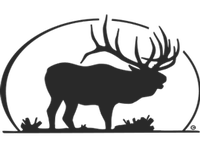-

Anderson Elk Ranch
Categories
Farms & Ranches
About Us
Over 25 years experience raising elk. Two farms in Fort Scott, Kansas and one in Morganville, Kansas. Currently have a heard of around 100 elk.
We are active in the Kansas Cervid Breeders Association and the North American Elk Breeders Association. We continue to seek the best genetics to improve our heard.
ELK FACTS:
An elk is in the deer family Cervida, which are animals with antlers. In America we also call elk “wapiti”, a Native American Shawnee tribal name meaning “white rump”. An elk can run up to 45 miles per hour.
BULLS—Male elk. Mature bulls average 800 to 1100 pounds, stand 5’ to 5’6” at the shoulder and are 7 to 8 years of age. Antlers—even though they fall off every spring, an elk’s antlers are made out of bone and are one of the fastest-growing bones known to science. Antler can grow 1”-1 1/2” per day and is regulated by the length of day light. Antlers fall off in March and regrow every year. Velvet is the word used to describe elk antler before it has started to
Cows—Female elk. Mature cows average 550 to 600 pounds, stand 4’ to 5’ at the shoulder and are 3 to 4 years of age. They do not grow antlers. They are good mothers.
Calves—Born late May to early June. A healthy elk calve weighs about 35 pounds at birth. Nurses 4 to 6 times a day-drinking more than 4 cups. Gain an average of 2 lbs a day during the first 5 months. They are spotted when born and develop their brown coats in six months.
Breeding—The rut, controlled by the day/ night cycle, is from August to October. One bull can service 20 to 40 cows. A cow’s gestation is approximately 246 days.Video Media
Images

Gallery Image sunset.jpg

Gallery Image bull.JPG

Gallery Image cows.jpg

Gallery Image field.JPG

Gallery Image pond.jpg

Tell a Friend


